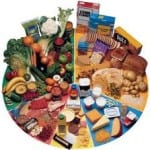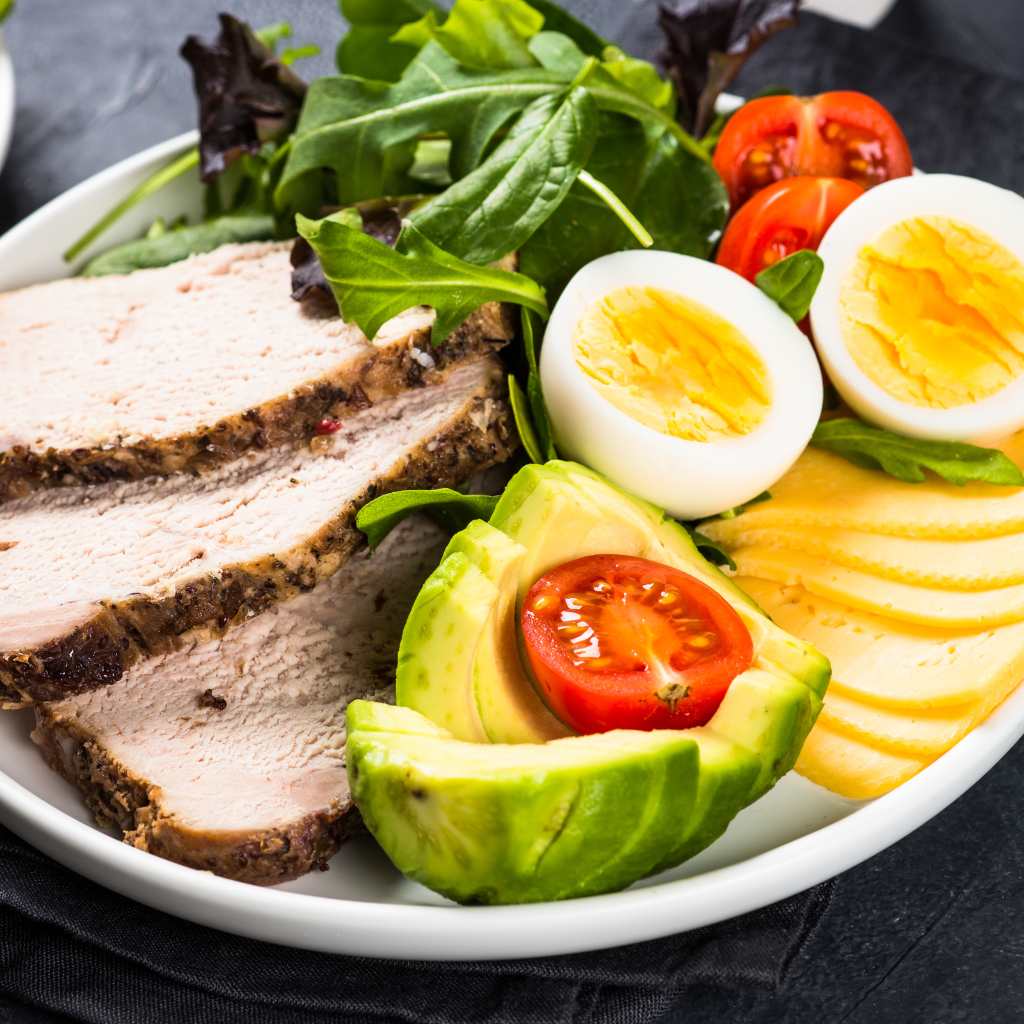Menu
The balanced diet
What can we do to obtain the best benefits from the food we eat?
Here are some answers to a few crucial questions.
Food Groups
Modern man and especially modern, western man, is faced with a bewildering number of foods to choose from.
Compared to our ancestors and rural people in Africa, people living in South African cities have so many different foods to choose from, that it is quite understandable that they get confused. However, the basic food groups have remained the same, only the variety in each group has expanded dramatically.
If you stop and think for a moment about the foods you eat, you will see that they can be classified into a number of broad categories, namely:
- Fruit and vegetable group
- Grains and cereal group
- Milk and dairy group
- Meat, fish and egg group
- Fat and oil group.
Of course most foods, and especially prepared or processed foods, can contain ingredients from more than one of these food groups, e.g. potato crisps are made of potatoes (fruit and vegetable group), but they also contain a lot of fat.
Most people are able to work out for themselves which group a food belongs to. Just be logical and don’t kid yourself. Taking the potato crisp example, most people would not classify this food as a vegetable, but they know that this is a high-fat food and that it can make one gain weight when eaten in excess.
The fruit and vegetable group
This is probably the most important group when it comes to good health.
Fruit and vegetables, which are derived from living plants, are rich in health-promoting nutrients such as beta-carotene, vitamins A and C (powerful antioxidants), minerals, dietary fibre (wonderful for regularity and reducing the energy content of the diet), and bioflavonoids (protective against many diseases).
Because fruit and vegetables contain so many protective nutrients, they should be eaten in large quantities and everyone should try and eat five or more portions a day.
A typical example would be eating an apple, an orange, half a cup of grated carrots, a green salad and drinking a glass of fruit juice to obtain those vital five portions a day.
This food group protects against the degenerative diseases associated with the western lifestyle, such as heart disease, hypertension, diabetes, obesity, diverticulitis and a suppressed immune system.
The grain and cereal group
This food group is also called the carbohydrate or starchy food group.
Unfortunately about 30 years ago a prominent researcher called Prof Yudkin, proposed a theory that carbohydrates in general, and sugar in particular, were the cause of all the ills that plague humanity, especially obesity. The good Professor did a remarkable job. Not only did his theory result in sugars and starchy foods becoming the pariahs of the western food world, but this bad press also rubbed off on all the other carbohydrate foods. We are still feeling the negative effects of his campaign today.
Ask any person at random which foods they should cut out to be healthy and to lose weight, and they will answer, “carbohydrates”.
The opposite is actually true as has been proved over and over again ever since Prof Yudkin launched his attack on sugars and starches in the 1960s. But the basic idea has stuck and now it is difficult to convince the modern public to accept carbohydrate foods as the wonderful, healthy staples they really are.
There is a lot of evidence that people who eat mainly unprocessed starches and carbohydrates, cereals and grains, are very healthy and don’t suffer from the diseases associated with our western lifestyle.
Rural African tribes who have diets based on grain (millet, sorghum, maize), fruit and vegetables, and sour milk, to which small quantities of foods derived from animals such as meat, are added, do not develop heart disease, stroke, and most cancers. These people are also not obese.
The answer to our ever increasing epidemic of obesity, heart and blood vessel disease, cancer and digestive problems, is to return to eating plenty of starchy, unprocessed cereals and grains.
The ideal is to make the bulk of each meal a carbohydrate-rich food, e.g. eat a bowl of unsifted maize meal, Maltabella or oats porridge, or high-fibre cereal, plus wholewheat toast for breakfast. Or have wholewheat sandwiches for lunch if you are at work and base your evening meal on jacket potatoes, brown rice, pasta, samp, or boiled crushed wheat.
The cereals and grains group is our best source of B vitamins, vitamin E, essential minerals and trace elements (zinc, copper, selenium, magnesium, potassium), dietary fibre and polyphenols. These nutrients protect us against heart disease, many different kinds of cancer, diabetes and obesity.
Eat two or more portions of the cereal and grain group at each meal and you will be healthier, live longer and gain less weight. Just remember to select only unprocessed or minimally processed starches and grains to get the greatest benefit.





